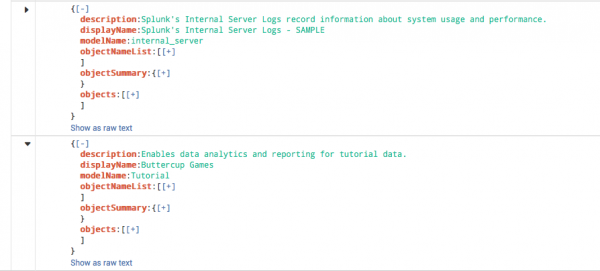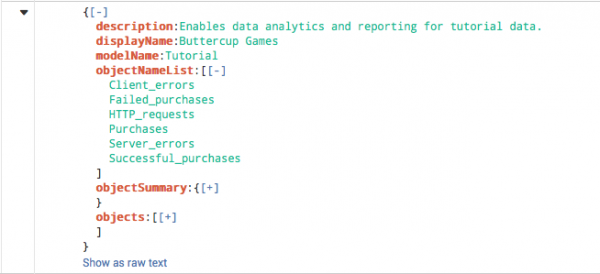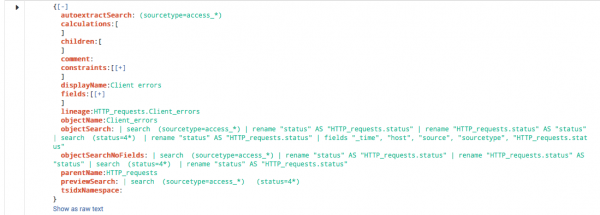datamodel
Description
Examine data model or data model dataset and search a data model dataset.
Use the datamodel command to return the JSON for all or a specified data model and its datasets. You can also search against the specified data model dataset.
A data model is a hierarchically-structured search-time mapping of semantic knowledge about one or more datasets. A data model encodes the domain knowledge necessary to build a variety of specialized searches of those datasets. These specialized searches are in turn used by the search to generate reports for Pivot users. For more information, see About data models and Design data models in the Knowledge Manager Manual.
The datamodel search command lets you search existing data models and their datasets from the search interface.
The datamodel command is a generating command and should be the first command in the search. Generating commands use a leading pipe character.
Syntax
| datamodel [<data model name>] [<dataset name>] [<search>]
Required arguments
None
Optional arguments
- data model name
- Syntax: <string>
- Description: The name of the data model to search. When only the data model is specified, the search returns the JSON for the single data model.
- dataset name
- Syntax: <string>
- Description: The name of a data model dataset to search. Must be specified after the data model name. The search returns the JSON for the single dataset.
- search
- Syntax: <search>
- Description: Indicates to run the search associated with the specified data model and object. For more information, see the search command.
Usage
The datamodel command is a generating command and should be the first command in the search. Generating commands use a leading pipe character.
Examples
The following examples are created using data from the "Data Model and Pivot Tutorial".
Example 1:
Return JSON for all data models available in the current app context.
| datamodel
Example 2:
Return JSON for the "Buttercup Games" data model, which has the model ID "Tutorial".
| datamodel Tutorial
Example 3:
Return JSON for Buttercup Games's Client_errors dataset.
| datamodel Tutorial Client_errors
Example 4:
Run the search for Buttercup Games's Client_errors.
| datamodel Tutorial Client_errors search
Example 5:
Search Buttercup Games's Client_errors dataset for 404 errors and count the number of events.
| datamodel Tutorial Client_errors search | search status=404 | stats count
See also
Answers
Have questions? Visit Splunk Answers and see what questions and answers the Splunk community has about using the datamodel command.
| ctable | datamodelsimple |
This documentation applies to the following versions of Splunk® Enterprise: 7.0.0, 7.0.1, 7.0.2, 7.0.3, 7.0.4, 7.0.5, 7.0.6, 7.0.7, 7.0.8, 7.0.9, 7.0.10, 7.0.11, 7.0.13



 Download manual
Download manual
Feedback submitted, thanks!